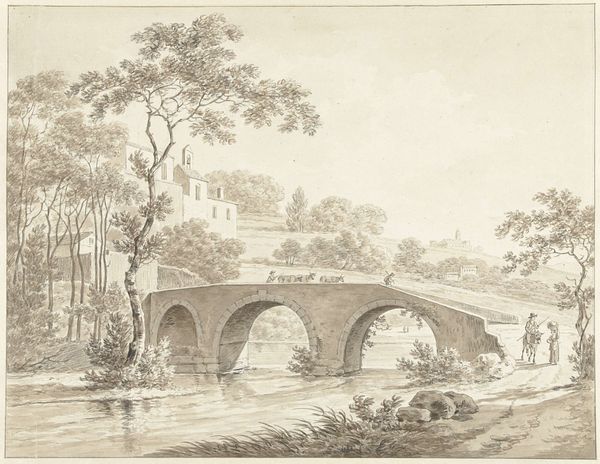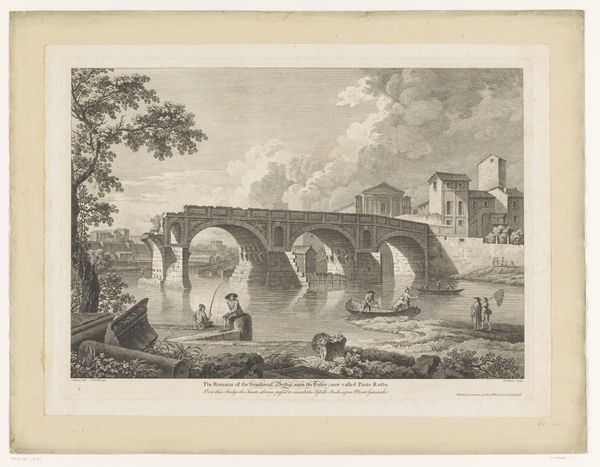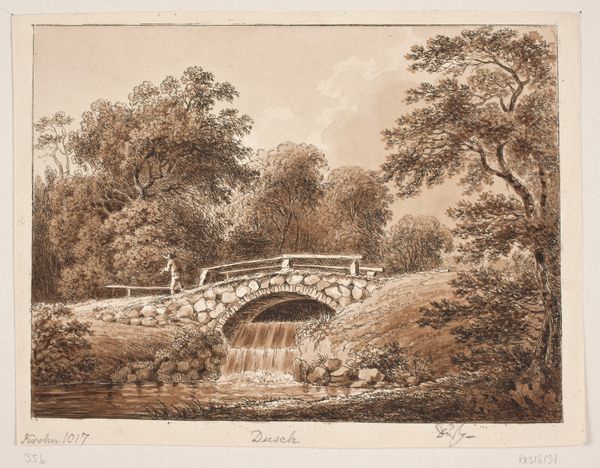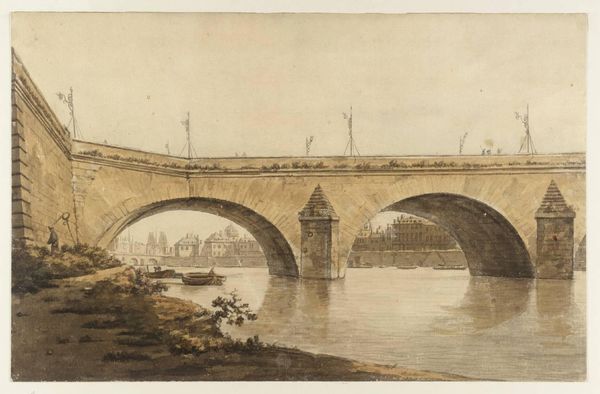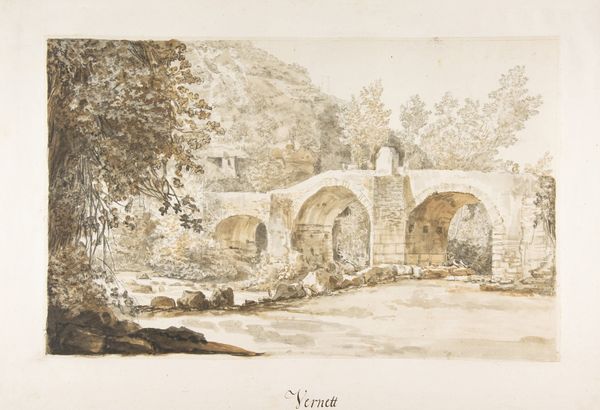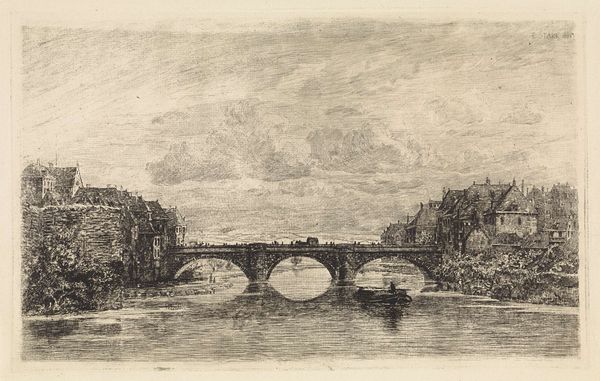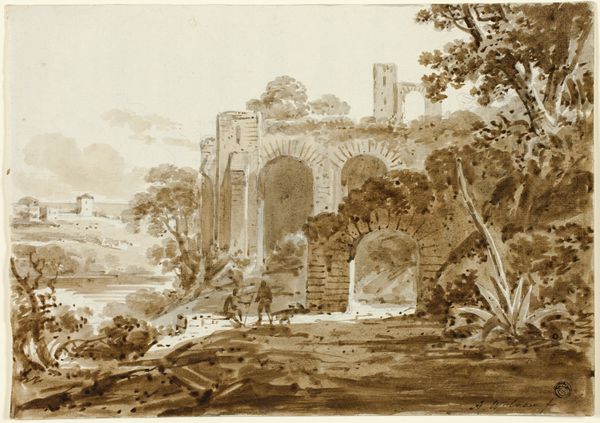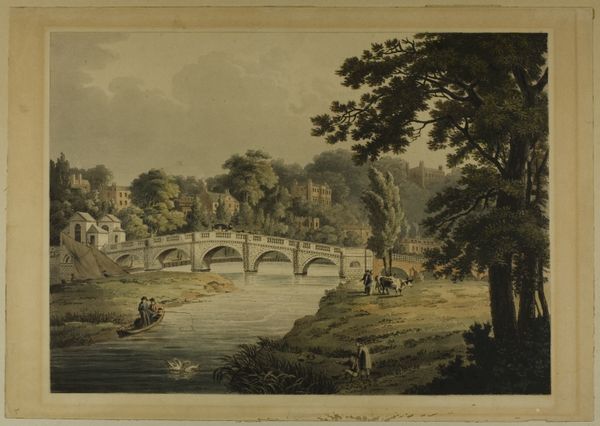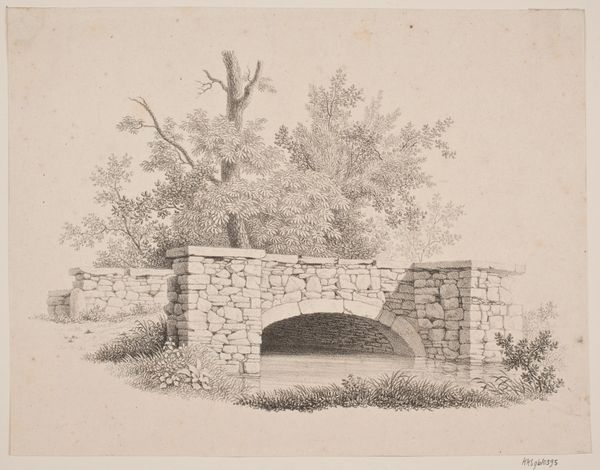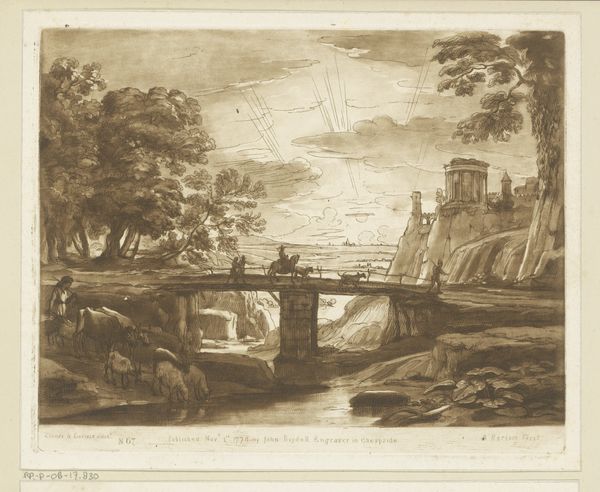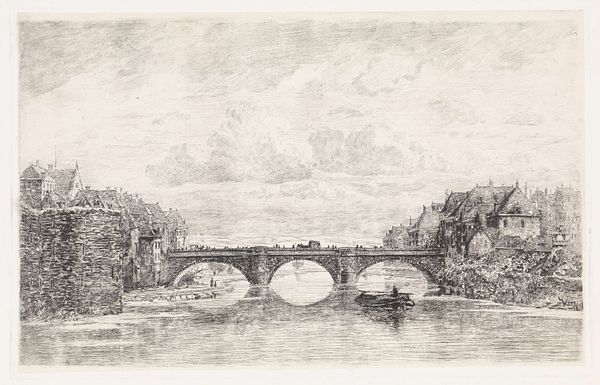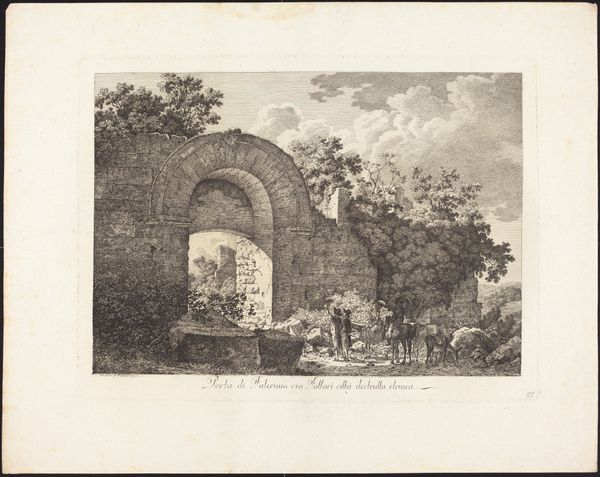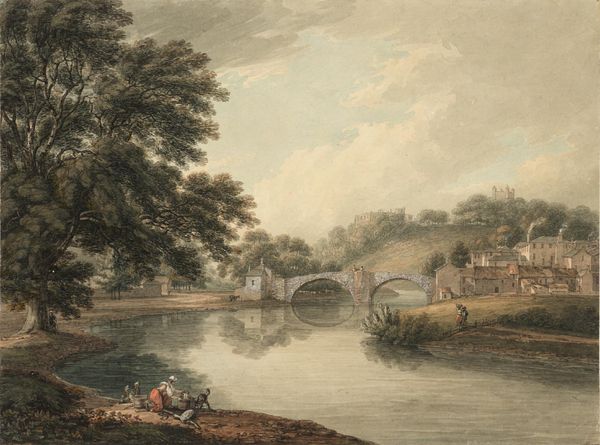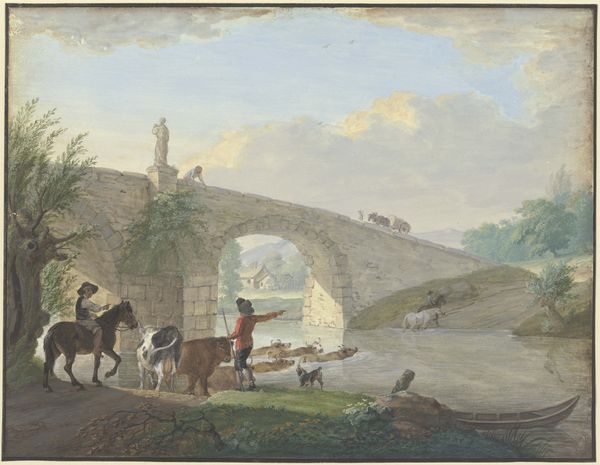
Bridge at Blenheim Palace (recto); York Cathedral (verso) 1780 - 1832
0:00
0:00
drawing, print, plein-air, watercolor
#
drawing
# print
#
plein-air
#
landscape
#
watercolor
#
coloured pencil
#
romanticism
#
cityscape
#
watercolor
Dimensions: sheet: 6 7/8 x 10 11/16 in. (17.5 x 27.1 cm)
Copyright: Public Domain
Curator: This is a fascinating piece titled "Bridge at Blenheim Palace," with York Cathedral sketched on the reverse, dating roughly from 1780 to 1832. Editor: My initial impression is of its remarkable serenity, almost austere. The delicate washes of watercolor give it an airy quality. Curator: Indeed. It reflects the growing interest in picturesque landscape and country estates during that period. Blenheim Palace, as a seat of power, held considerable social significance. Editor: Look at the application, though. You can see the marks of the pencil beneath the thin layers of watercolour, giving a textured effect. It feels very process-oriented. The drawing isn't just depicting; it's revealing its own construction. Curator: I see it as capturing a specific moment, indicative of England's economic landscape. It also embodies elements of the Romantic movement with its focus on the sublime. The grand bridge becomes a symbol of human ambition set against nature's enduring presence. Editor: That may be so, but those subtle pencil marks and the economical use of pigment speaks to a practical materiality. It forces us to consider where the artist was standing, in what light, with what equipment. There is labor involved in such artworks which we tend to dismiss. Curator: True, the plein-air method employed offers a sense of immediacy. Think of the implications of travelling and sketching; access to materials, and networks for selling. Editor: It’s more about how he coaxes so much architectural presence from simple paper and readily accessible watercolour. It begs the question, are we looking at the bridge or a beautiful arrangement of colours, light and dark? Curator: I believe we see both. The image exists at a convergence point; the site-specific artwork produced becomes another object of elite collection to become enmeshed with politics, market, and identity. Editor: Fair point, although, from my perspective, it reveals the fascinating tension between high art subject matter and mundane techniques that shape it. Curator: Precisely. The piece enriches our appreciation of how landscapes and national identities were curated and consumed through art. Editor: Absolutely, and it underscores how art is just as much about labour and materials as it is about lofty themes.
Comments
No comments
Be the first to comment and join the conversation on the ultimate creative platform.
